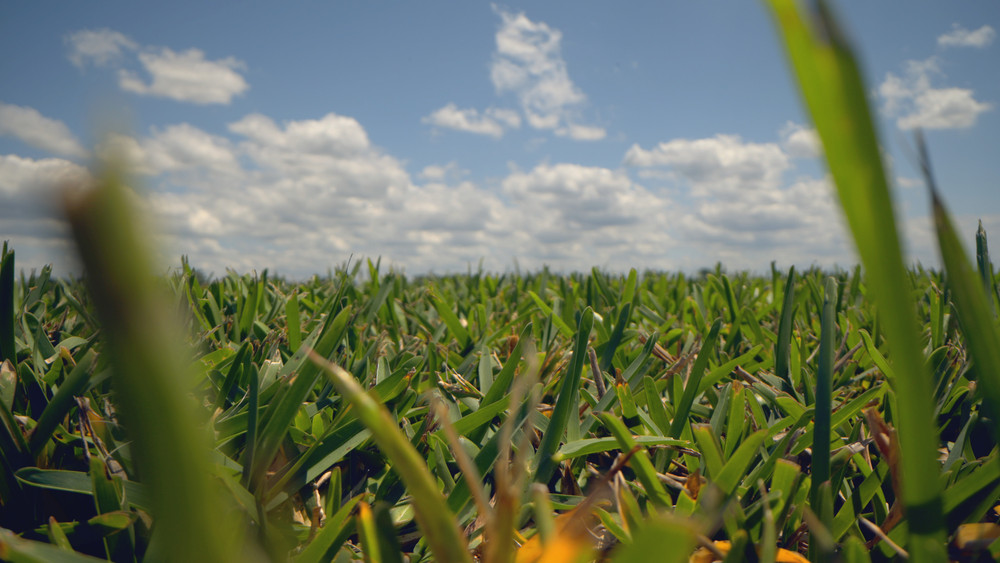Miami Sod Guide: Choosing and Maintaining the Best Grass for South Florida
Posted by Farm2Yard on Sep 16th 2025
Miami Sod Guide: Choosing and Maintaining the Best Grass for South Florida
Miami homeowners know that a beautiful, green lawn is part of the South Florida lifestyle. But maintaining turfgrass in this region requires understanding the unique climate, soil, and growing conditions. In this sod guide, we’ll cover everything you need to know - from the best sod types for Miami to seasonal maintenance and installation timing - using research-backed recommendations from the University of Florida IFAS Extension.
Miami’s Climate and What It Means for Sod
Miami sits firmly in a tropical monsoon climate (USDA Zone 10b–11a), with hot, humid summers, mild winters, and an average annual rainfall of around 60 inches. The rainy season runs from May through October, often bringing heavy afternoon thunderstorms, while the dry season runs from November through April.
For turfgrass, this means:
-
Warm-season sod types thrive year-round.
-
Drought tolerance is essential for the dry season.
-
Heat and salt tolerance are major advantages in coastal Miami neighborhoods.
-
Lawns may face challenges like chinch bugs, nematodes, and fungal diseases due to the warm, moist environment.
Because Miami rarely experiences frost, sod never truly goes dormant, which influences both grass selection and year-round maintenance needs.
Best Types of Sod for Miami
According to the University of Florida IFAS Extension turfgrass guide, the following sod types perform best in Miami:
St. Augustinegrass
-
Most popular choice in Miami due to its lush appearance and broad leaves.
-
Varieties like Floratam and Palmetto offer strong performance.
-
Tolerates heat and humidity well but requires full sun for best results.
-
Moderate salt tolerance, making it suitable for coastal yards.
-
Susceptible to chinch bugs and needs vigilant pest management.
Zoysiagrass
-
Dense, fine-textured turf that provides a manicured look.
-
Good wear tolerance - ideal for high-traffic residential lawns.
-
Moderate shade tolerance compared to St. Augustine.
-
Resistant to some pests but slower to establish.
Bermudagrass
-
Excellent for high-traffic areas like sports fields and parks.
-
Requires full sun; not well-suited for shaded lawns.
-
Fast growth and high drought tolerance, but prone to aggressive spreading and thatch buildup.
Bahiagrass
-
Low-maintenance alternative for large, low-input lawns.
-
Tolerates sandy soils and drought.
-
Coarser texture, less suited for high-end residential landscapes.
How Miami Weather Impacts Sod Selection
Miami’s heavy summer rains can lead to fungal outbreaks such as brown patch and take-all root rot, particularly in St. Augustinegrass. Good drainage is critical when selecting sod and preparing soil.
The dry winter season means irrigation is necessary for sod survival and root development. The UF/IFAS irrigation guide recommends watering deeply but infrequently to promote deep rooting.
Proximity to the ocean is another consideration. Lawns near Biscayne Bay or the Atlantic coast benefit from sod types with higher salt tolerance, like seashore paspalum or Floratam St. Augustine.
Finally, Miami’s year-round warmth makes it a breeding ground for pests such as chinch bugs, mole crickets, and nematodes. Homeowners should factor in turfgrass pest resistance when selecting sod.
Seasonal Sod Maintenance in Miami
Because Miami lawns never go fully dormant, turfgrass requires active care in all four seasons. Here’s what to expect:
Spring (March–May)
-
Fertilize with a slow-release nitrogen fertilizer to support spring green-up.
-
Begin regular mowing as growth accelerates.
-
Monitor for emerging pests like chinch bugs.
Summer (June–August)
-
Mow frequently (weekly or more), but never remove more than one-third of the blade.
-
Apply fungicides preventively if the lawn has a history of fungal diseases.
-
Water deeply during dry stretches, but reduce irrigation after heavy rains.
Fall (September–November)
-
Apply a balanced fertilizer to prepare sod for the drier season.
-
Overseed with ryegrass if you want to maintain bright green color through winter.
-
Watch for sod webworms and armyworms, which thrive in fall.
Winter (December–February)
-
Reduce fertilization, as excessive nitrogen can encourage pests.
-
Maintain irrigation during dry periods to avoid drought stress.
-
Continue mowing, though growth slows slightly.
More details on seasonal care can be found at UF/IFAS Lawn Management Calendar.
Best Time of Year to Lay Sod in Miami
Unlike northern climates, Miami’s year-round warmth allows sod installation almost any time. However, the best months for laying sod are spring and early summer (March–June), when rainfall is abundant and soil temperatures are warm.
Avoid installing sod during periods of heavy rain when the soil is saturated, as this can hinder root establishment. Late fall and winter installations are also possible but require more frequent irrigation.
General Tips for Miami Sod Success
-
Soil Preparation
Test your soil through UF/IFAS Soil Testing Lab. Miami soils are often sandy and benefit from organic matter and pH adjustment. -
Irrigation
Newly installed sod requires daily watering for the first two weeks, then gradually reduce frequency. Established lawns do best with 1–1.5 inches of water per week. -
Mowing Heights
-
St. Augustine: 3.5–4 inches
-
Zoysia: 1–2 inches
-
Bermuda: 0.5–1.5 inches
-
Bahiagrass: 3–4 inches
Following these heights improves turf health and root strength.
-
-
Pest and Weed Management
Integrated pest management (IPM) practices help reduce chemical use. Monitor for pests regularly and apply treatments only when necessary. -
Fertilization
Follow UF/IFAS Florida-Friendly fertilization guidelines. Over-fertilizing can harm turf and contribute to nutrient runoff into Biscayne Bay.
Conclusion
A thriving Miami lawn starts with choosing the right sod - whether that’s Floratam St. Augustine for its lush look, Zoysia for its durability, or seashore paspalum for coastal resilience. By understanding Miami’s tropical climate, preparing soil properly, and following year-round maintenance, you can ensure a green, healthy yard that withstands the challenges of South Florida weather.

